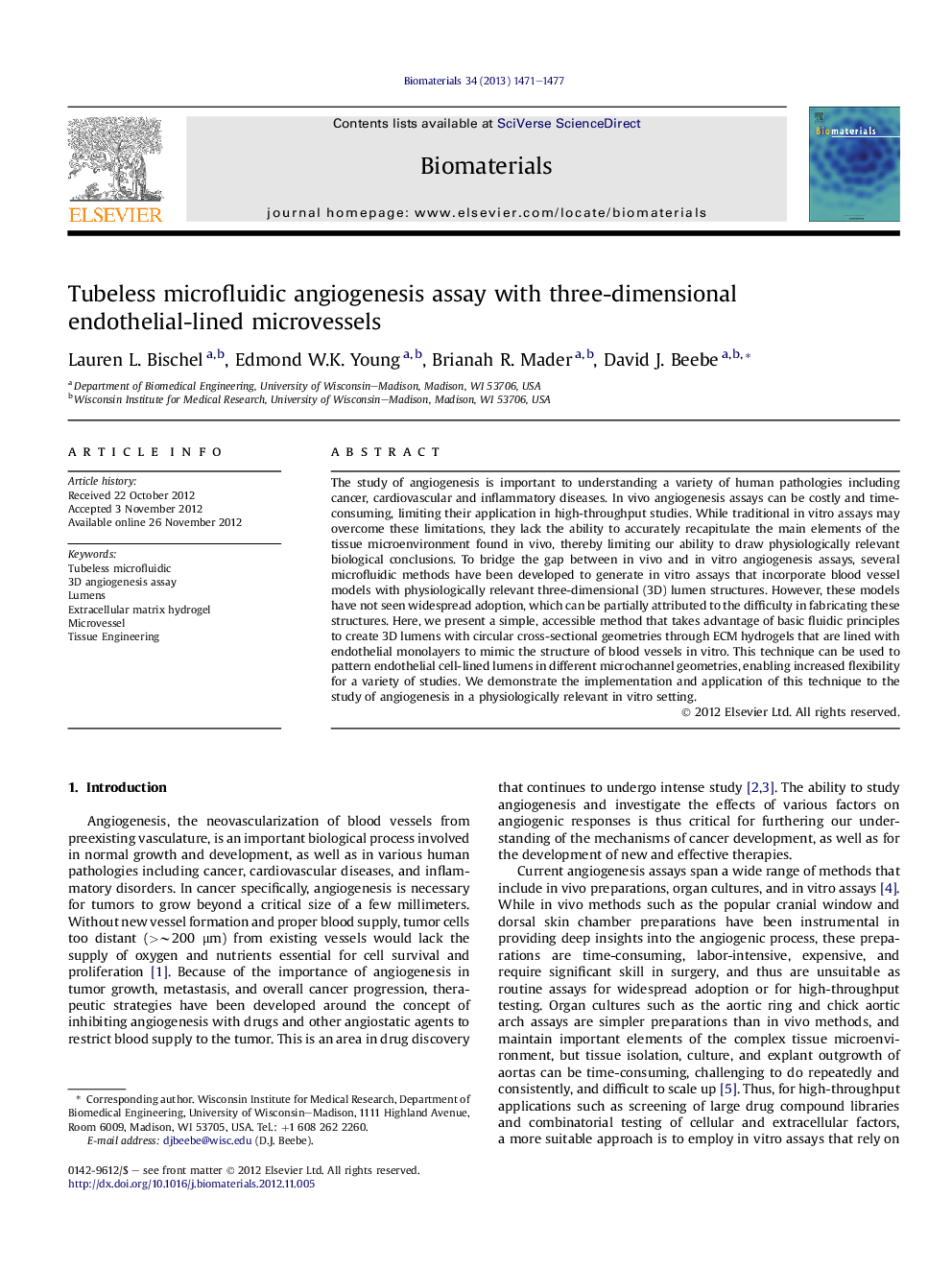| Article ID | Journal | Published Year | Pages | File Type |
|---|---|---|---|---|
| 10229210 | Biomaterials | 2013 | 7 Pages |
Abstract
The study of angiogenesis is important to understanding a variety of human pathologies including cancer, cardiovascular and inflammatory diseases. In vivo angiogenesis assays can be costly and time-consuming, limiting their application in high-throughput studies. While traditional in vitro assays may overcome these limitations, they lack the ability to accurately recapitulate the main elements of the tissue microenvironment found in vivo, thereby limiting our ability to draw physiologically relevant biological conclusions. To bridge the gap between in vivo and in vitro angiogenesis assays, several microfluidic methods have been developed to generate in vitro assays that incorporate blood vessel models with physiologically relevant three-dimensional (3D) lumen structures. However, these models have not seen widespread adoption, which can be partially attributed to the difficulty in fabricating these structures. Here, we present a simple, accessible method that takes advantage of basic fluidic principles to create 3D lumens with circular cross-sectional geometries through ECM hydrogels that are lined with endothelial monolayers to mimic the structure of blood vessels in vitro. This technique can be used to pattern endothelial cell-lined lumens in different microchannel geometries, enabling increased flexibility for a variety of studies. We demonstrate the implementation and application of this technique to the study of angiogenesis in a physiologically relevant in vitro setting.
Keywords
Related Topics
Physical Sciences and Engineering
Chemical Engineering
Bioengineering
Authors
Lauren L. Bischel, Edmond W.K. Young, Brianah R. Mader, David J. Beebe,
